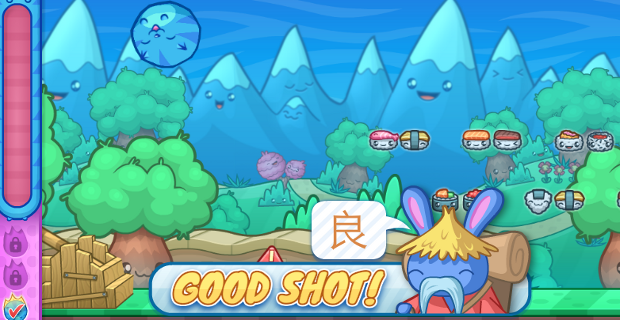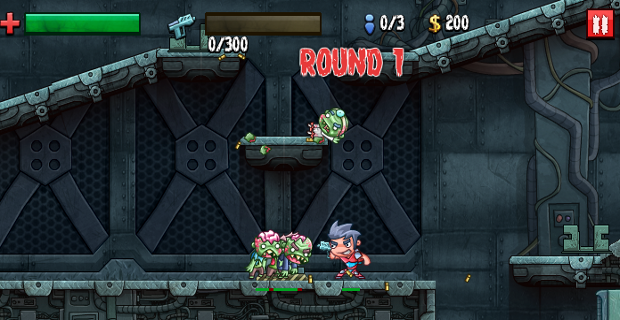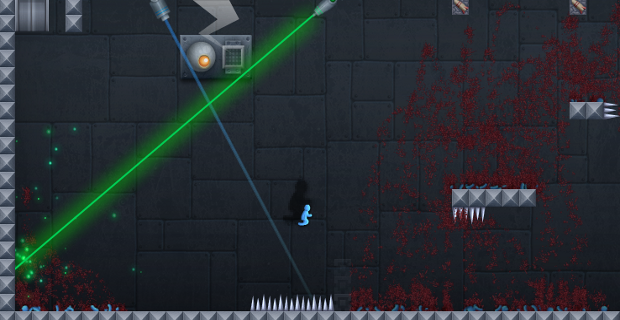If it’s bright and colourful and makes you want to grin, chances are Jimp is behind it. We talk to the talented artist about his work and the future.

The world is grey. Everything is grey. There you are, lying on the cold, grey ground, feeling nothing, while Portishead warbles in the background. All there is for anyone to eat are fistfuls of shredded iceberg lettuce and sugar-free peanut butter. It is very sad, if sad were something you could muster yourself to even feel.
Then suddenly, colour. Streaking across the sky like a bolt of candy-coated wonder, filling the universe with joy and sunshine. You’re confused, but… happy? Is that what this feeling is, or is it just dehydration from all the peanut butter? Actually, dear reader, it’s Jimp, one of the most beloved, prolific, and vibrant game artists around. His work in Flash gaming has been bringing sunshine to people’s faces for years, and as his career moves forward with even bigger titles, we sit down to talk with him a bit about his work, his inspirations, and the future.

You have one of the most instantly recognizeable art styles in online gaming. What would you say some of your biggest influences are, and why have you gravitated towards your particular sunny style?
Jimp: Wow thats a big compliment, thanks so much! One of the biggest influences on my style has to be Nintendo. I remember getting my first ever console – an N64 with Mario 64 – when I was 8 years old. That game pretty much defined video games for me at that age, and I’ve been attracted to that bright, colourful, rounded aesthetic ever since. I spent a lot of my teenage years hanging around on Newgrounds, watching the animations and playing games there. Artists like Dan Paladin, Super Flash Bros and Johnny Utah all helped influence me to start making games of my own. These days I watch cartoons like Adventure Time and Steven Universe, play games and listen to music to find inspiration. I live in Bristol, UK which is covered in amazing, ever changing street art, which is another great source of inspiration for me!

What sorts of challenges are there in creating artwork for a game versus more traditional illustrations?
Jimp: You definitely have to think about things a little differently when making art for games. With traditional illustration you are given a blank canvas, which can be filled with any image imaginable. With games, you’re more limited by the technology and the games design. For example the game might be built using a tile based engine, which limits the way you can draw the level art quite drastically.
Players also have preconceived ideas of how things should act going into new games, which pushes design in certain directions. If you make barrels red, most players will recognise that they’re likely to explode if you shoot one, so this informs your design. Enemies need to look dangerous so players know to avoid them – a snail with a smiley face isn’t very threatening, but if you put spikes on the snails shell and make its face angry, players will be much more likely to try and avoid it.
We are however seeing a lot of art games today that are trying to break free from these boundaries and limitations, which is wonderful to see and helping to push the medium forward!
Sushi Cat is probably Armor Games’ most well known icon thanks to your work. How did you got about designing him, and were there any designs for him you wound up scrapping?
Jimp: Going back to the previous question, Sushi Cat is a great example of how the art was very much informed by the games design. Joey Betz made a demo in which you drop a green blob from the top of the screen, and it gets bigger as you collect other smaller blobs. I was asked to do the art for the game, so came up with a bunch of different ideas like YumBees (bees collecting pollen!), Drunk Pirates (pirates bouncing around collecting grog!), and Sushi Cat! Sushi Cat was a clear favourite in the Armor offices so we went with that. The sushi concept made the bright, colourful, japanese art style an obvious choice and the game came together really well. I guess the rest is history!

Your studio Massive Monster has done some great games, and has some very highly anticipated titles coming soon as well. How did the formation of that studio happen?
Jimp: After working on Flash games for many years, it started becoming harder and harder to make a good living. A lot of the people playing Flash games had moved to playing games on mobile and tablets instead. I had worked with Jay Armstrong on a few different Flash games, Rocket Pets, Zombinsanity and The Last Dinosaurs. We get on really well and work really well together, so decided to set up a company making bigger, better games aimed at Steam and console! We always dreamed of making bigger games like the ones we grew up playing, and felt we were finally experienced enough to do it, so this felt like a natural step forward for us. We did a few more Flash games as Massive Monster, Sushi Catapult and Give Up 2, which both did really well. Currently we are working on our first two major releases, The Adventure Pals and Never Give Up!

What sort of advice would you give artists looking to get into game development, or alternately, yourself if you could travel back in time and talk to Junior Jimp?
Jimp: If you really want to be a game artist (or programmer or musician or designer etc), my advice would be to throw yourself into it with everything you have. The games industry can be pretty brutal, especially as an indie developer, so you really need to be passionate and hard working if you want to succeed. Draw every day, start making games with your friends and keep pushing yourself forward and strive to be better, in everything you do. You could say this for any profession, but as soon as you feel comfortable and content with your work, then you stop learning and pushing yourself… Its important to always stay critical of your own work, thats how you get as good as you possibly be. I know I’m not even nearly there yet!
For more from Jimp, check out his personal website, keep up with his studio Massive Monster, or follow Jimp on Twitter.

~~~~~~~~~~~~
Writer: Dora Breckinridge / Dora has been writing about games for the better part of a decade, and playing them for even longer, using the glow of the monitor to keep her warm in the frozen wilds of her native Canada.